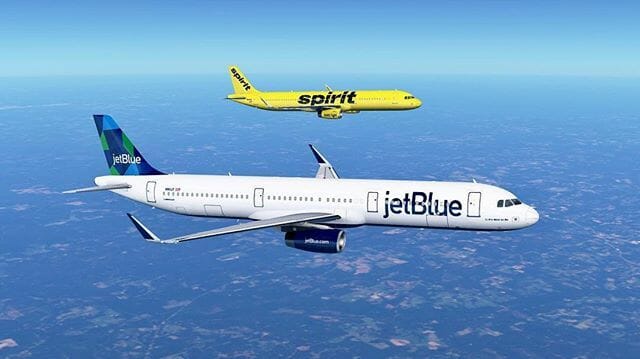Story Update April 20, 2020 – Delta, Alaska and Hawaiian have applied for and given approval for reduction of Hawaii Flights. This situation has more to do with the state of Hawaii than anything else. The state of Hawaii current requires a 14-day quarantine period for travelers to Hawaii. This alone makes Hawaii an unattractive destination at this time. American and United are expected to request the same waivers. These waivers certainly make a lot of sense due to the quarantine requirement that is currently in effect.
Both airlines filed motions with the U. S. Department of Transportation to cut service to dozens of markets. They join other carriers asking for relief for the service level requirement.

The Way It Used To Be
Before 1978, there was a federal government agency called the Civil Aeronautics Board (CAB). The Board controlled the main aspects of commercial airline operations. The Civil Aeronautics Board would be required to grant permission to the airlines for:
- Beginning a new route,
- Ending an existing route,
- Raising fares and
- Decreasing fares.
Unlike that other federal agency, the Federal Aviation Administration (FAA) which governs airline safety, the former CAB regulated how airlines operated in particular with the flying public.
The Airline Deregulation Act of 1978
The intent of the airline deregulation act was to promote a free market in commercial aviation. This would allow airlines to set routes and prices on their own. Before the deregulation of the airlines, flying was a lot more expensive than it is today. CAB regulated airlines as if there were a form of “public utility”. The Act eliminated the Civil Aeronautics Board and the airlines were able to freely compete with each other to gain market stakes.
Today, airline fares are so cheap than before, that I compare the cost of flying like getting on a city bus and paying your fare. The airline industry started to grow at a record pace with more and more airlines created. The free market turned out to be a double-edged sword. There were more than twenty major airlines flying in the 1980s. Economic downturns such as September 11th and the great recession of 2008 forced many airlines to cease flying or merge with another carrier.
The intent of the Act was to encourage new airlines to form while ensuring that secondary-cities would still have air service. New airlines did come into existence but guaranteeing service to smaller secondary airports fell short of the goal of the Act.
The CARES Act Stimulus
Nobody saw the decimation of the airline business that is now upon us. Passenger airlines are averaging just about 10% of their former schedules. At this rate, the aviation business will go under in a matter of months. Congress created the CARES Act to help the airlines weather the current storm of travel restrictions and social distancing. One of the main objectives of the CARES Act was to prevent a rapid and huge layoff of airline employees while the airlines regroup. The financial aid to the airlines did come with some requirements. Two of the main objectives of the Act was to enable airlines to continue paying their employees while maintaining service to the airports in their route structure. Specifically, on the level of service, the Act says:
Continuation of service requirements — The Secretary of the US Department of Transportation may require, to the extent reasonable and practicable, an air carrier receiving a loan, or loan guarantee, or payroll protection grant to maintain levels of scheduled air transportation service as the Secretary of Transportation deems necessary to ensure that services to any point served by that carrier before March 1, 2020 are continued. When determining whether to exercise this authority, the Secretary of Transportation shall consider the air transportation needs of small and remote communities and the need to maintain well-functioning health care and pharmaceutical supply chains. The Secretary of Transportation’s authority to require air carriers to maintain certain levels of service expires on March 1, 2022.
The Service Waiver Process Begins
It didn’t take long for Jet Blue and Spirit to attempt dumping routes. Both airlines filed motions with the U. S. Department of Transportation to discontinue routes to dozens of markets.
In the case of Spirit, the airline file a motion to discontinue service to 26 markets effectively one-third of its network. Their motion was denied with the exception of service to Aguadilla, Puerto Rico where it prevailed on the “reasonable and practicable” argument.
Jet Blue filed to suspend service to 11 markets that served the following cities from out-lying airports:
- Albuquerque, NM,
- Dalles-Fort Worth, TX,
- Minneapolis-St. Paul, MN
- Houston, TX and
- Aguadilla and Ponce in Puerto Rico.
Again, like the motion with Spirit, Jet Blue was allowed to suspend service to Puerto Rico.
Alaska Airlines Took A Creative Approach To Routings
Alaska airlines took a very creative approach to compliance with the CARES Act. Many of the carrier’s destination cities in the east are only served once per day. Alaska tweaked their route structure to use “tag-flights”. Here is how the carrier is rerouting their network by combining flights:
- Seattle (SEA) to Dallas (DFW) then to Houston (IAH),
- Seattle (SEA) to Raleigh-Durham (RDU) then to Charleston (CHS),
- Seattle (SEA) to Minneapolis (MSP) then to Columbus, OH (CMH),
- Seattle (SEA) to Pittsburgh (PIT) then to Baltimore, MD (BWI) and
- Seattle (SEA) to San Luis Obispo, CA (SBP) and then to Santa Barbara, CA (SBA).
Final Thoughts
Jet Blue and Spirit join other airlines in requesting service waivers as part of the CARES Act Stimulus. The intent of the carriers retaining their service to existing cities was to ensure that secondary airports would still have airline service. Let’s hope that with the waivers that are received by the DOT that secondary airports don’t lose airline service.
